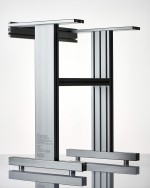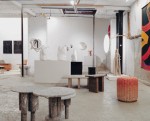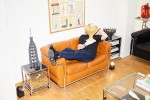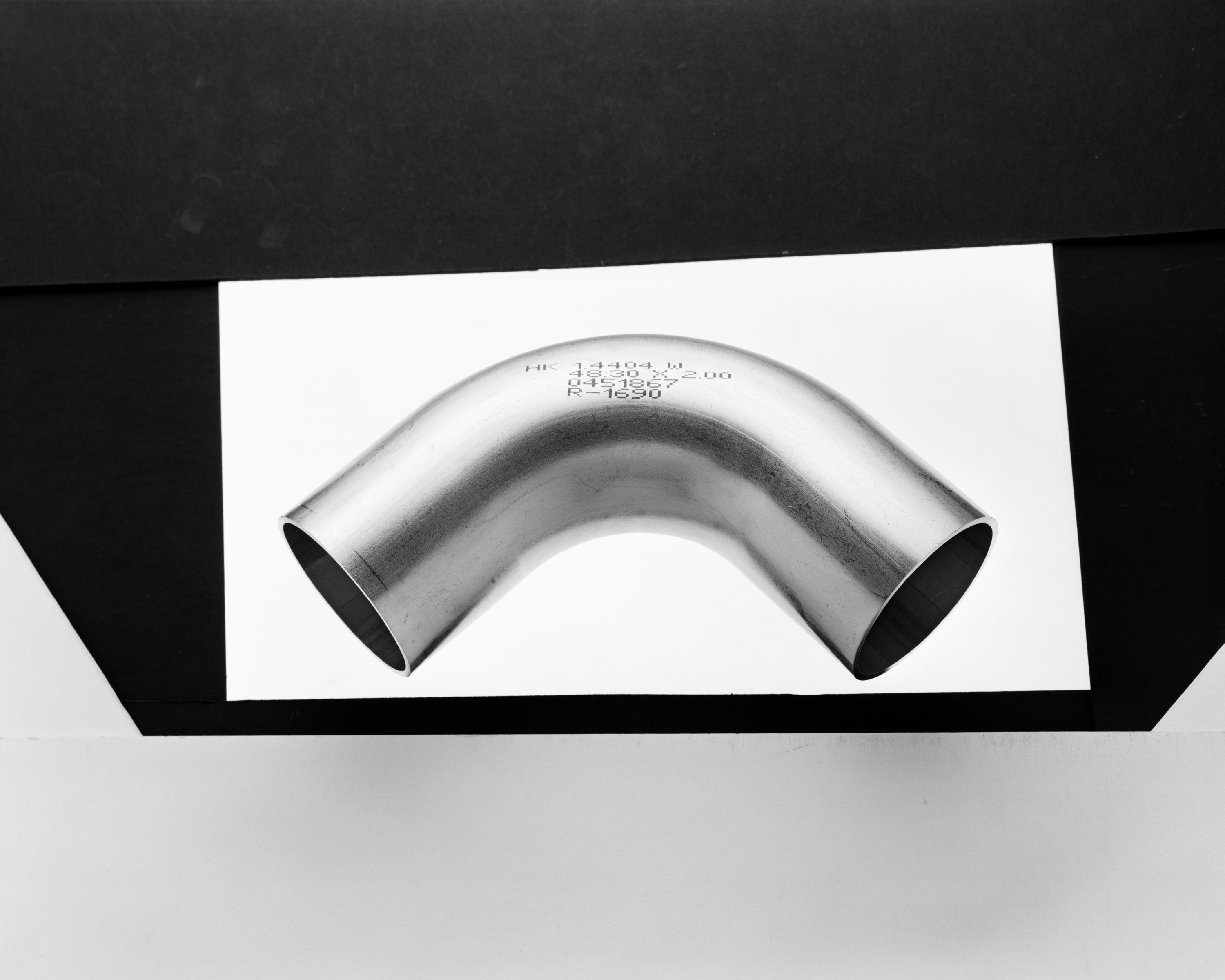Erika Cox
Organic audio systems
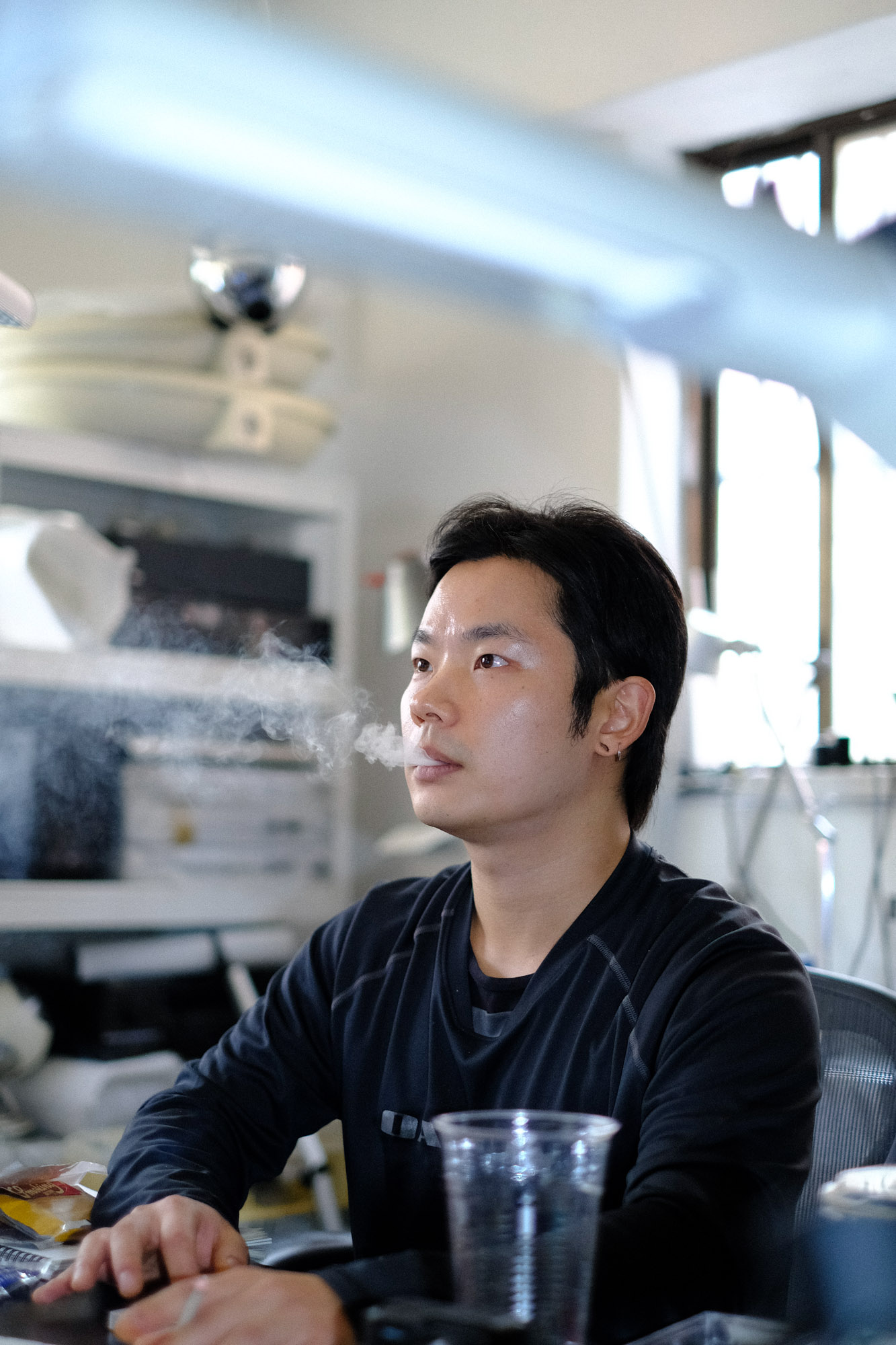
What’s your background? Did you study graphic design?
I actually studied printmaking, but I’ve always had broader interests, writing poetry, performing, making music, creating videos. In other words, I wasn’t formally trained as a designer at all. My education was in fine arts, but my creative pursuits have always spanned different mediums.
Would you consider yourself more of an artist than a designer, then?
Yes, definitely. I’m much closer to being an artist. Sometimes I make things that brush up against design, especially when working on functional objects, but my approach and mindset remain mostly artistic. I tend to follow intuition and expression more than any design playbook.
How did your interest in sound and objects start? What led you to building audio installations?
About two years ago, I started working on sound installations. It wasn’t just me, I collaborated with two friends who are also artists. We formed a collective called Evening Audio. Each of us contributes different expertise: my friends are better at the technical audio engineering and the structural parts, and I focus on the object’s form and visual presence. Together, we blend sound, design, and even film. It really began as a DIY curiosity: we love sound but found it hard to get good audio equipment here in Korea without paying a fortune. So we figured, why not build our own? That’s been our mission from the start, if you can’t find the thing you want, you create it yourself.
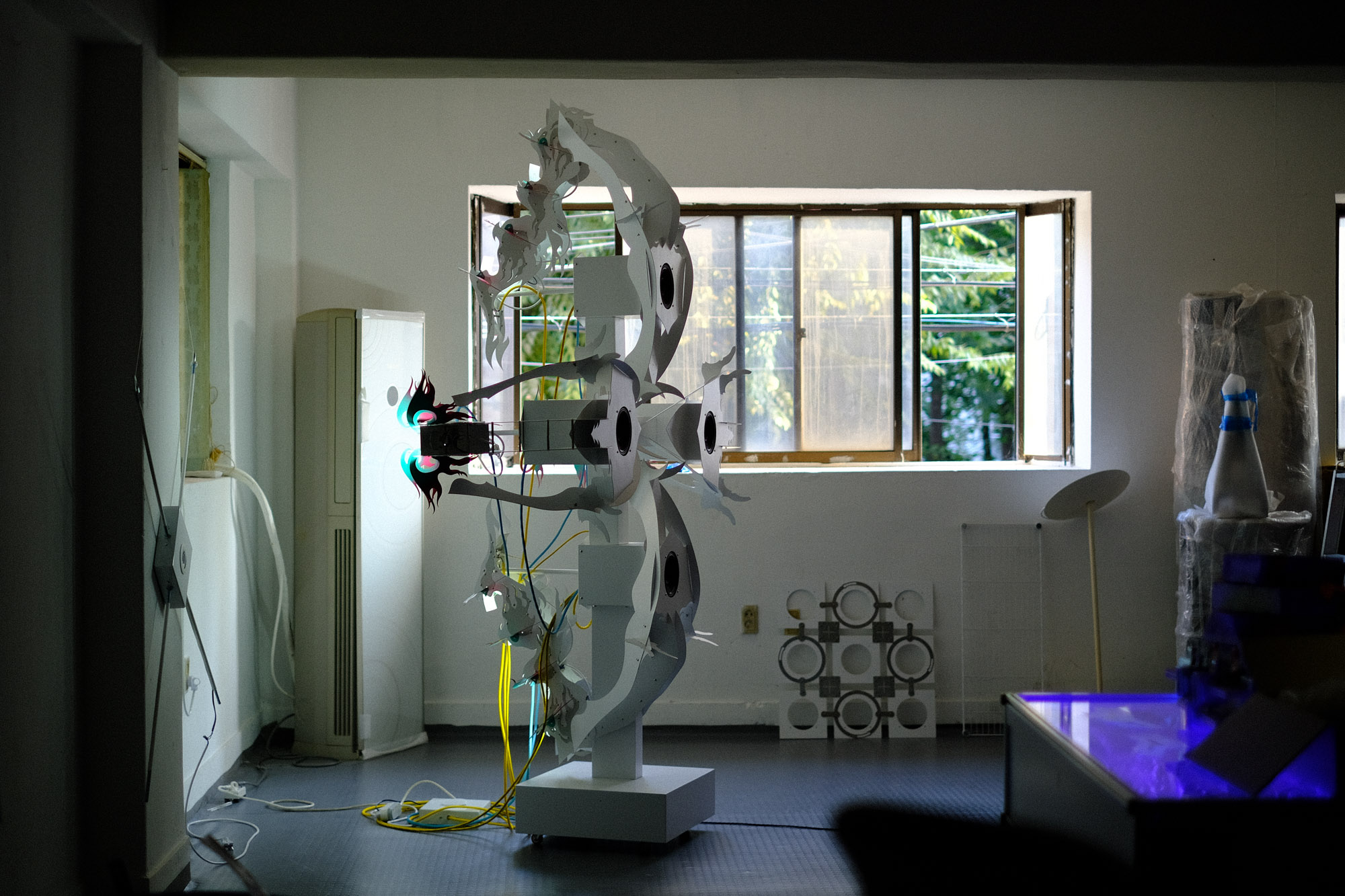
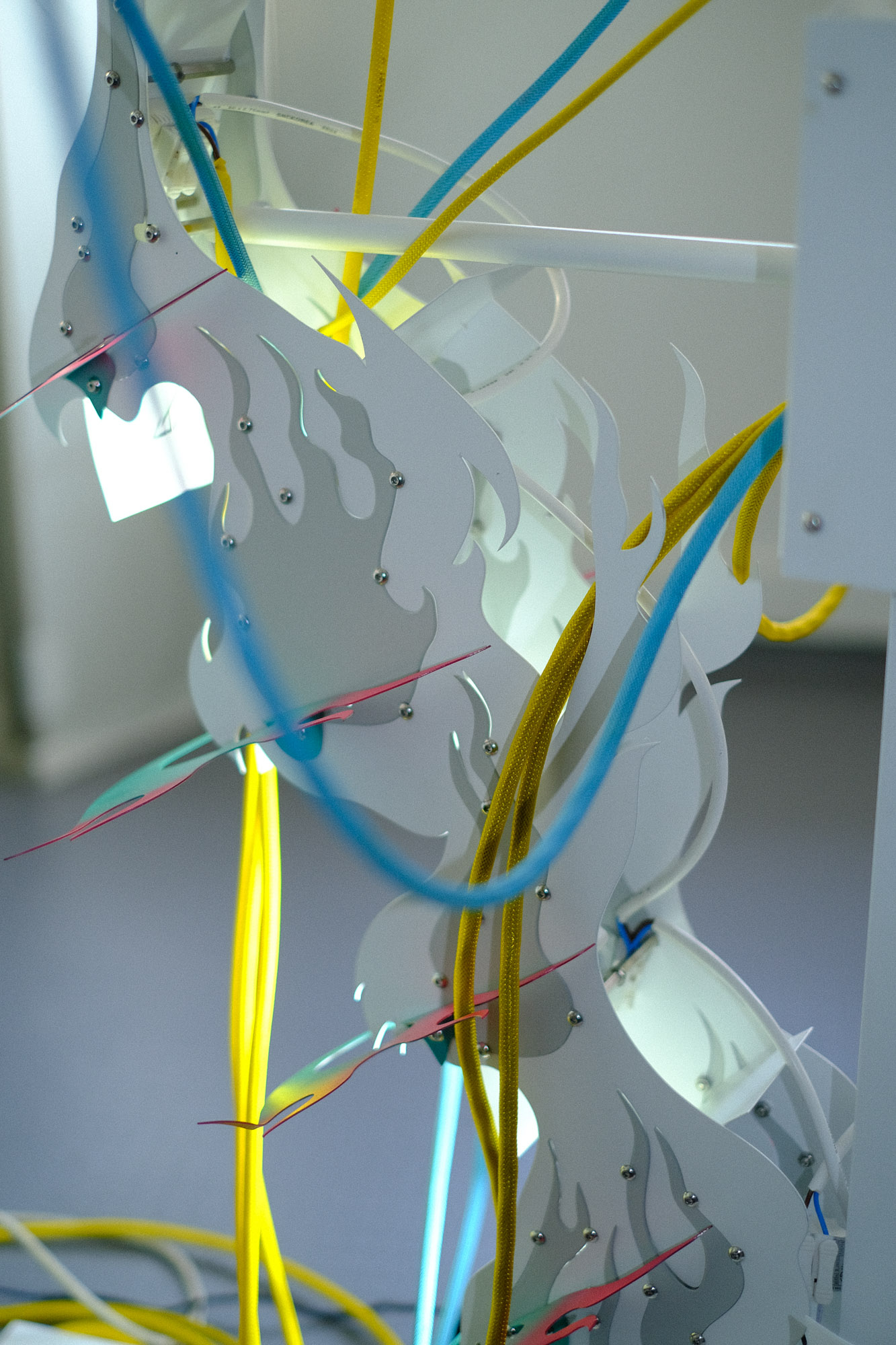
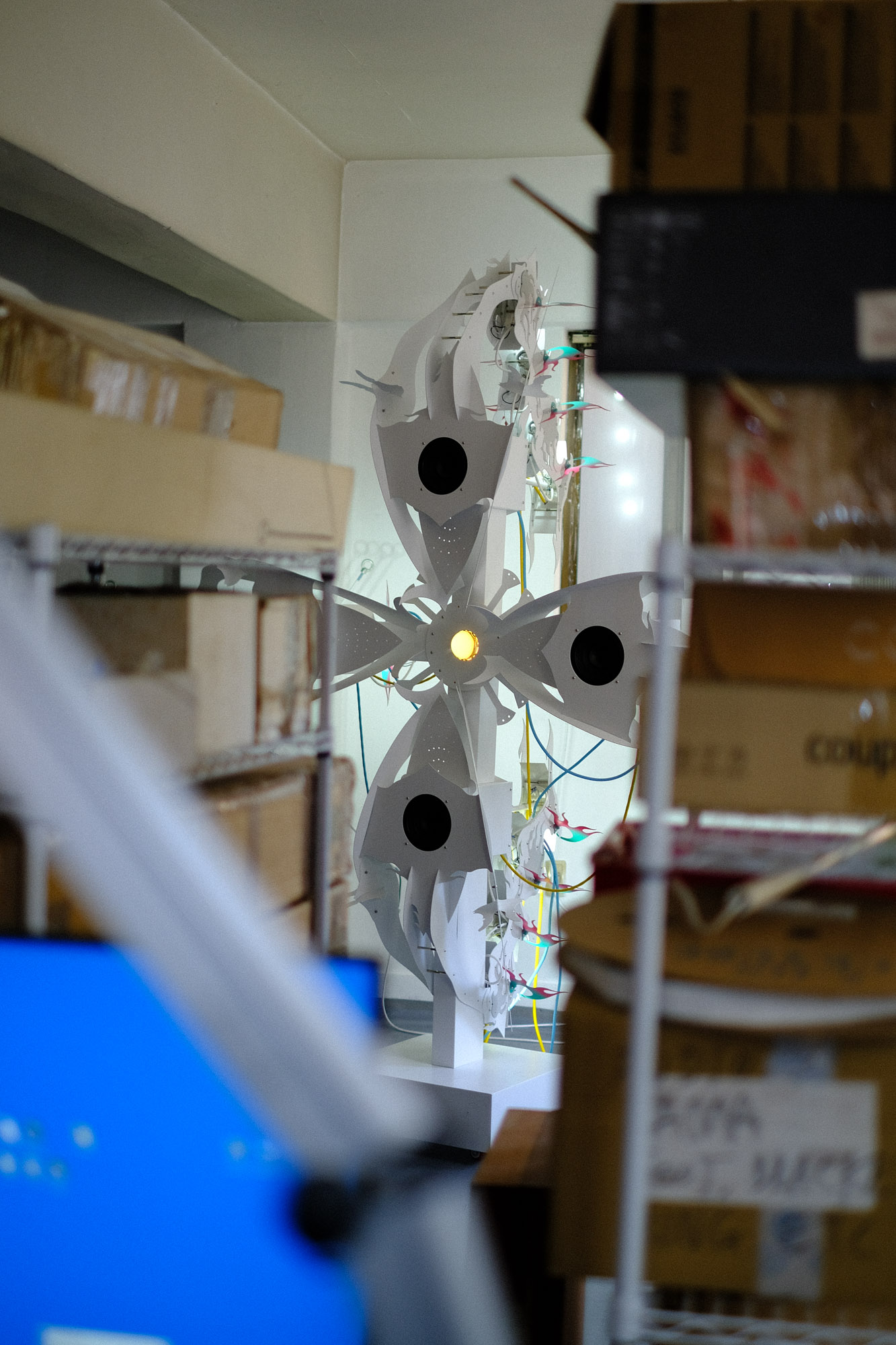
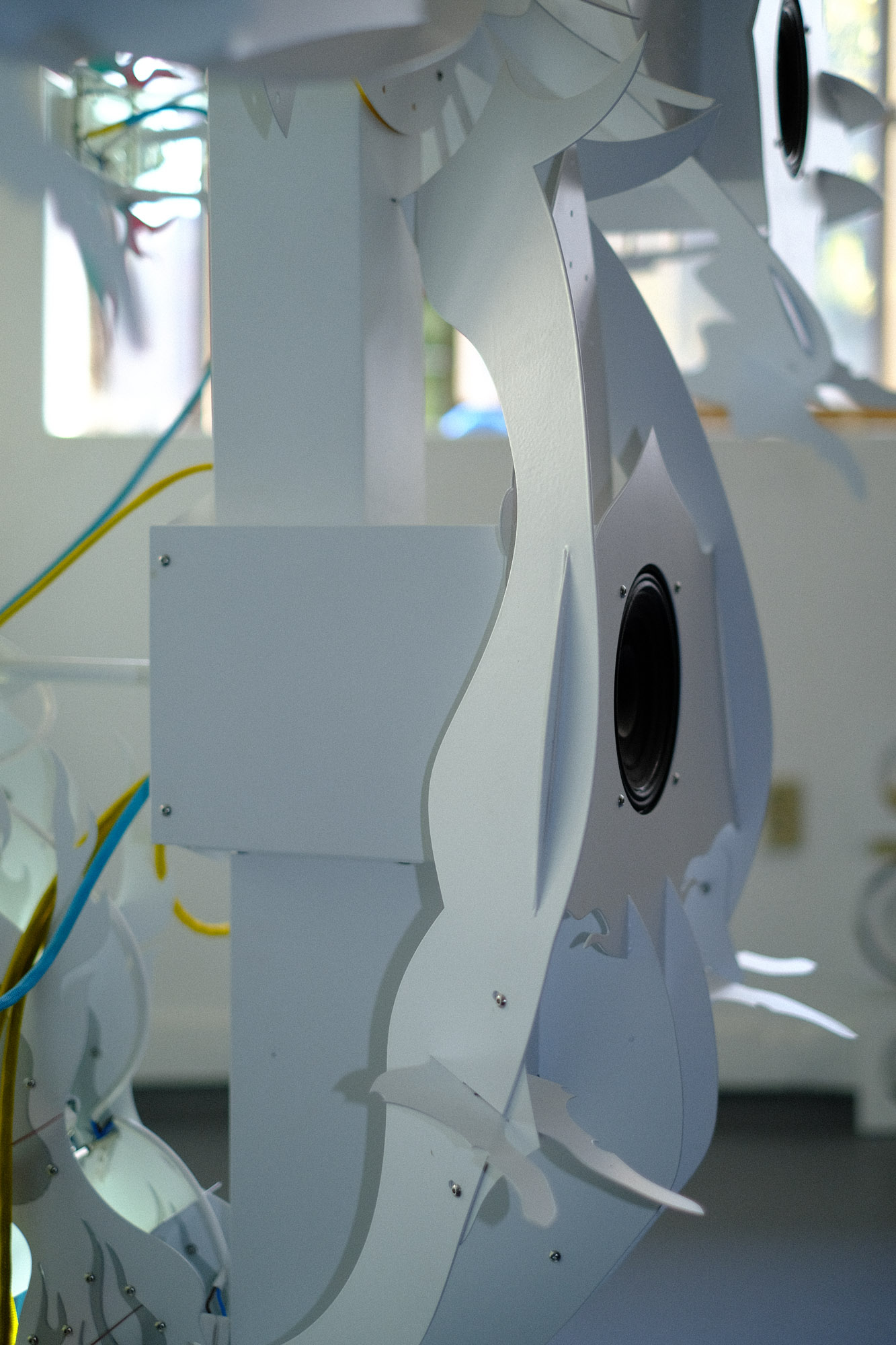

I think the first piece I saw of your work was the sound installation at the Post Archive Faction store in Seoul. That was a pretty cool piece.
Yes, that was our first big installation as Evening Audio. The store interior was nearly finished, but there was this empty space and something felt missing. The owner, who is a good friend of mine, remembered I’d mentioned wanting to build an audio system. One day he calls me up and basically says, “Hey, can you create something for this spot? Oh, and by the way, we open in three weeks.” It was an insane timeline.
Three weeks? That’s a tight timeline!
It was, absolutely. I pretty much designed the whole piece in one day—sketched it out, figured out the concept—and luckily he loved it immediately. The rest of the time was a whirlwind of actually building it, sourcing parts, and installing. We somehow pulled it off. It helped that we were all friends trusting each other to make it happen quickly.
We will publish the video about building that Post Archive Faction speaker – it had such a cool vibe, almost like a skateboarding video in style.
Thank you! That was intentional. Fun fact: I actually used to be a professional skater, so that style is second nature to me. The video, titled “Let’s Create a Speaker!”, was my way of documenting the process in a fun, relatable way. A lot of people here see my work as purely artistic and maybe a bit abstract, so I wanted to communicate the making and DIY aspect too. Filming and editing it with a skate-video feel made the whole build process look exciting and accessible. We really had a lot of fun doing it, and it shows. Plus, I’m not great at marketing or self-promotion, so making a video felt like a natural way to share what we do without it feeling like straight advertising.
There’s a serious engineering component to these sound sculptures. How do you approach the complexity between the technical audio engineering and the aesthetics of the piece?
Audio design is tricky because it’s so technical at its core. The engineering, the way sound waves work, the electronics, the acoustics, dictates a lot of the structure. You can’t ignore the physics if you want it to sound good. So in many ways the shape and materials are constrained by function. I lean on my friends’ expertise for a lot of the technical specifics. Within those constraints, I try to add my own voice through the visual and sculptural aspects. For example, that organic backside of the speaker wasn’t just for looks, it also had to support the weight of the speakers and withstand vibrations. I see those engineering requirements almost as a creative challenge: How can I meet them but still do something different? That’s where I feel I can contribute something new, by designing an unexpected form that still works technically. It’s a constant back-and-forth between form and function.
When it comes to actually building these systems, is your process more about assembling new high-end pieces, or repurposing and hacking older equipment? There’s a whole audio-DIY movement around that idea now.
For us it’s a mix of both. It really depends on the kind of sound we want to achieve for a project. Sometimes we’ll use brand-new components, speaker drivers, amplifiers, etc. Other times we love to rip apart old speakers and give them a second life in a new body. There’s a certain charm or warmth you get from vintage audio parts. We combine them with new parts to create hybrids. For example, we might build a fresh cabinet or sculptural frame but mount an old speaker cone inside it alongside modern electronics. It’s all about finding the right balance to get the sound quality and the look we’re aiming for. Every project ends up being a bit of a Frankenstein in the best way – new and old pieces working together. That approach is pretty common now in Seoul; there are even DIY audio cafés and workshops popping up. We’re kind of part of that wave of breaking apart systems and reinventing them.


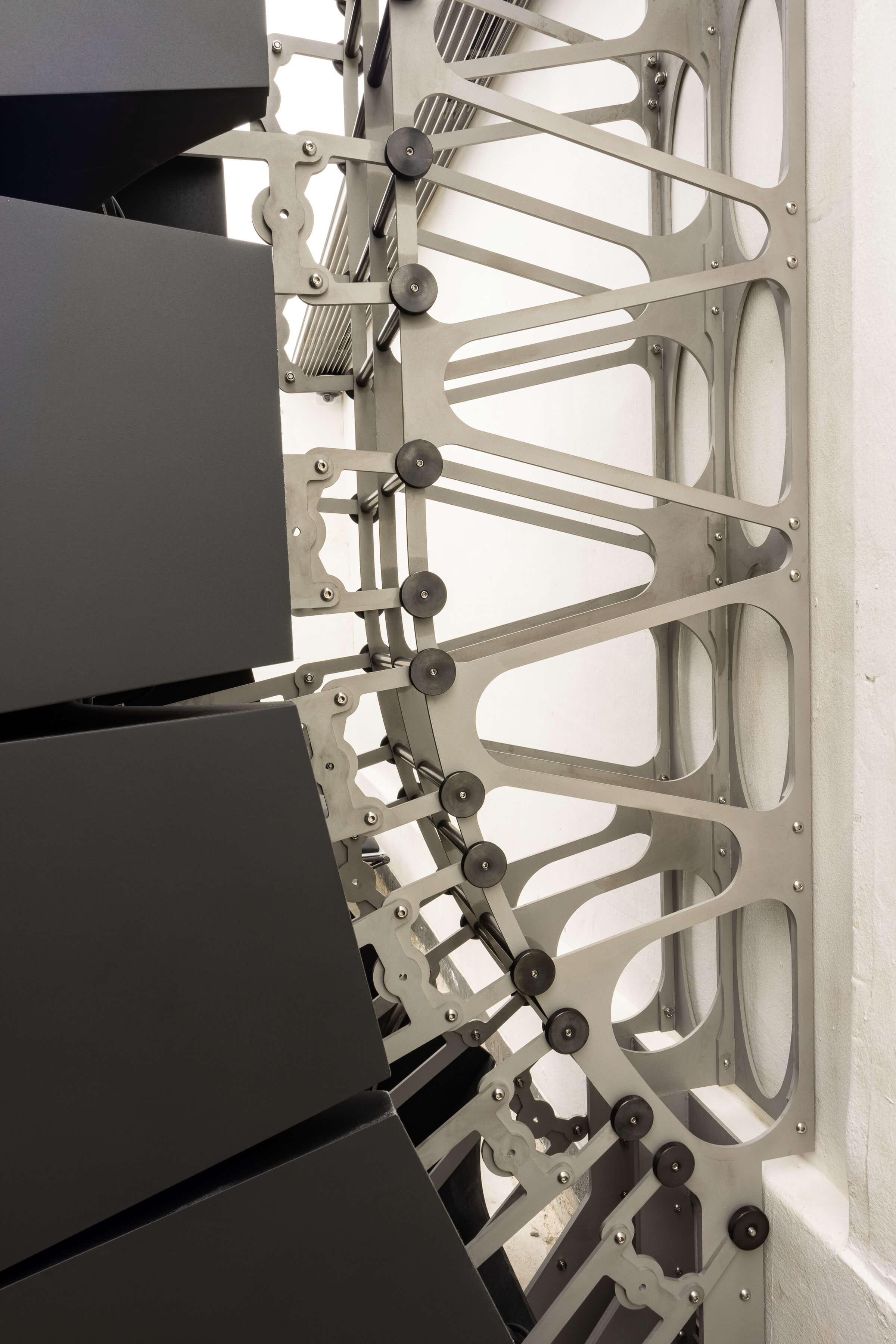

Where do you see your practice going in the next few years? Are you aiming to develop it into a brand that produces consumer speakers, or do you want to keep it more experimental and one-off?
We’d love to build a proper brand and create audio systems that more people can access – really good, well-designed speakers that are also affordable. That’s a dream of ours. But it’s challenging. The market here in Korea is tough. As I mentioned, most good audio equipment is imported from Europe or the US and marked up at high prices. Honestly, the audio market can be a bit dishonest in that way, with huge premiums on gear. We wanted to do something about that by making quality systems locally and offering them at a reasonable price. That’s kind of our first mission. The reality, though, is that we’re a small operation and none of us are business people or marketing experts. We’re just designers and artists making cool things. So the idea of a brand is there, but we know we’d need the right strategy and maybe to team up with someone who understands the business side. For now, we’re taking commissions and doing projects we find interesting, building up a portfolio. In the back of our minds, the bigger goal is to someday see our creations out in the world as a product line people can buy for their homes, without it losing the spirit of art that it started with.
On that note, I’ve noticed in Seoul that a lot of creatives blur the line between commercial work and artistic work. You see artists working on fashion stores, designers doing art installations. It seems quite fluid. Does that resonate with your experience?
Yes, very much. There’s a strong connection between the two here, almost out of necessity. Pure art spaces or public art forums are quite limited in Korea, there aren’t many venues where an experimental sound sculpture like ours can just be exhibited for its own sake. But commercial spaces, like retail stores or cafes, provide an opportunity to show our work to the public. So a lot of us end up creating art within commercial projects. It’s a realistic and in some ways very honest approach: we need to make a living, so we incorporate our creative expression into commercial commissions. I don’t think we have the same deep-rooted divide between “art” and “design” that you might find in Europe. Korea kind of jumped straight into a globalized creative scene after the war, without a long tradition of, say, industrial design or conceptual art in the everyday sense. Everything feels new and experimental here, and people are figuring it out as we go. So you’ll see a fashion brand collaborating with an artist to make an in-store installation, or an architect doing an art-inspired furniture piece for a cafe. It’s all blended. For me, commercial projects have been the only way to get my work out into the world in many cases. But I try to make sure that even if it’s in a shop or tied to a brand, the piece carries cultural or artistic value—something more than just visual merchandising. There’s always that hope that we’re infusing a bit of artistry into the commercial world.
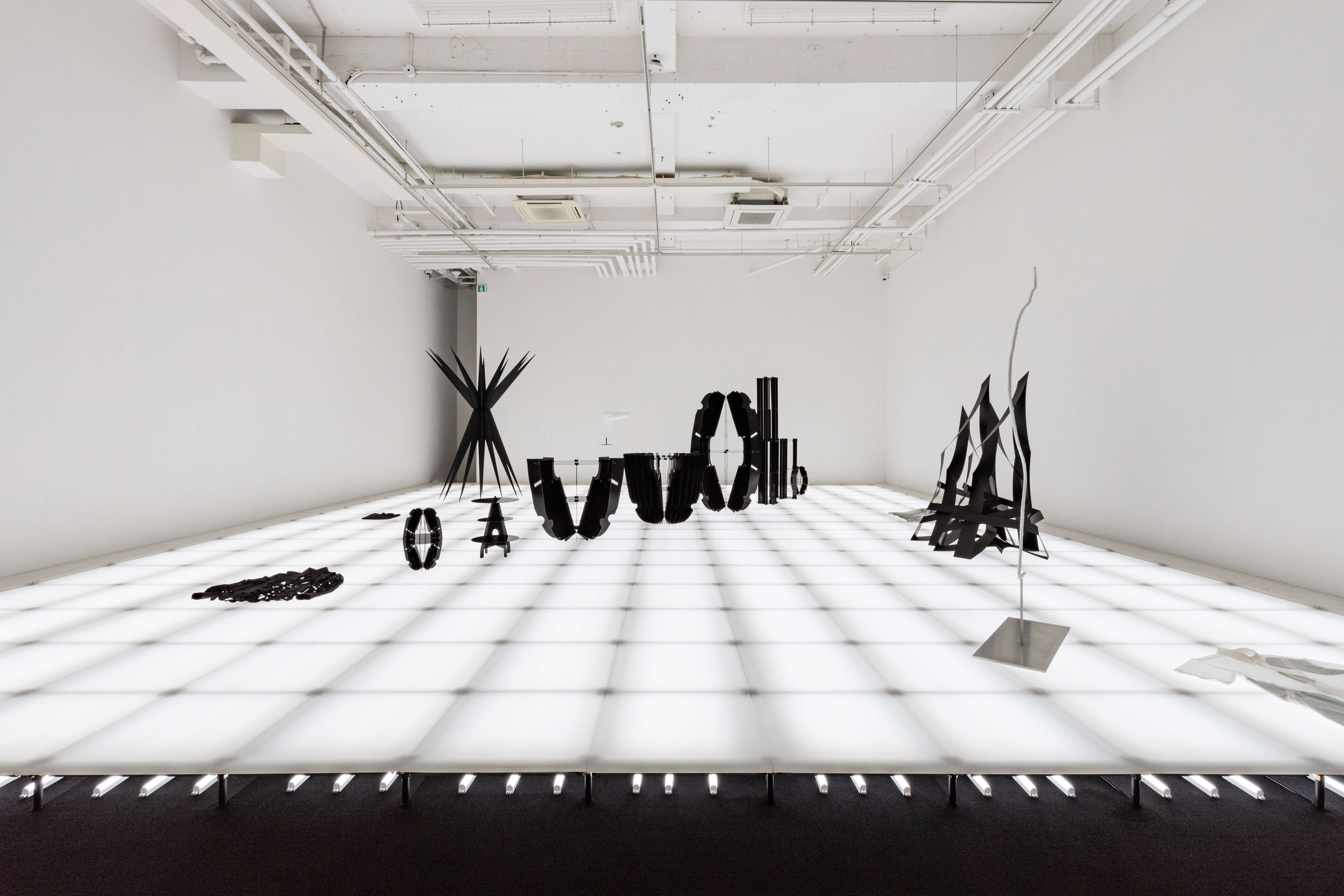
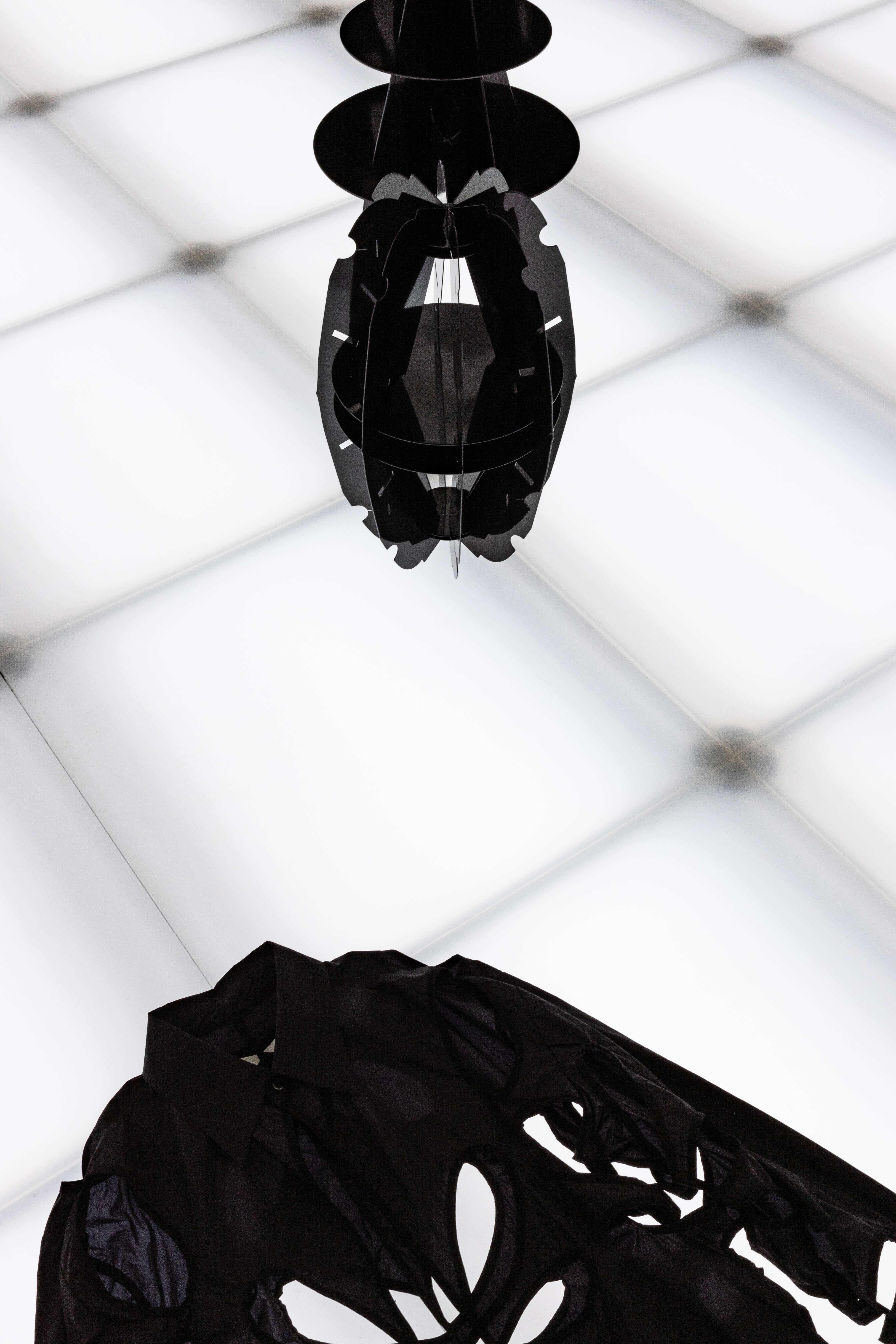

I’ve felt a strong sense of community and mutual support in the projects I’ve seen here. How would you describe the creative culture in the city at the moment?
It’s vibrant and very collaborative. Many young brands and studios here are doing exciting work and often blending art, design, and commerce in new ways. There’s definitely a sense of collectivity; lots of us know each other or at least know of each other’s work. Seoul is changing so fast-neighborhoods that used to be industrial or off-the-radar are turning into creative hubs with galleries, concept stores, and studios. The people behind this-designers, artists, musicians, fashion people-tend to mingle and work together. So you get this network or community effect. I think because we’re all experimenting and there isn’t a long-established “Korean design tradition” holding us back, everything feels fresh. We sort of have a blank slate in terms of identity, which is both exciting and challenging. On the one hand, we’re all trying to do something different and find a distinctly Korean creative voice. On the other, we’re pulling from global influences since we grew up consuming images and culture from all over the world. The result is a scene that’s very integrated, art and design and fashion cross over a lot. A lot of the key players are in their twenties and thirties. It does feel like a community or a big collective movement. For example, an interior designer might collaborate with a sculptor for a boutique, or a fashion label might invite a sound artist (like me) to elevate a runway presentation. Everyone benefits because we’re all showcasing each other’s work. It’s a “rising tide lifts all boats” situation.
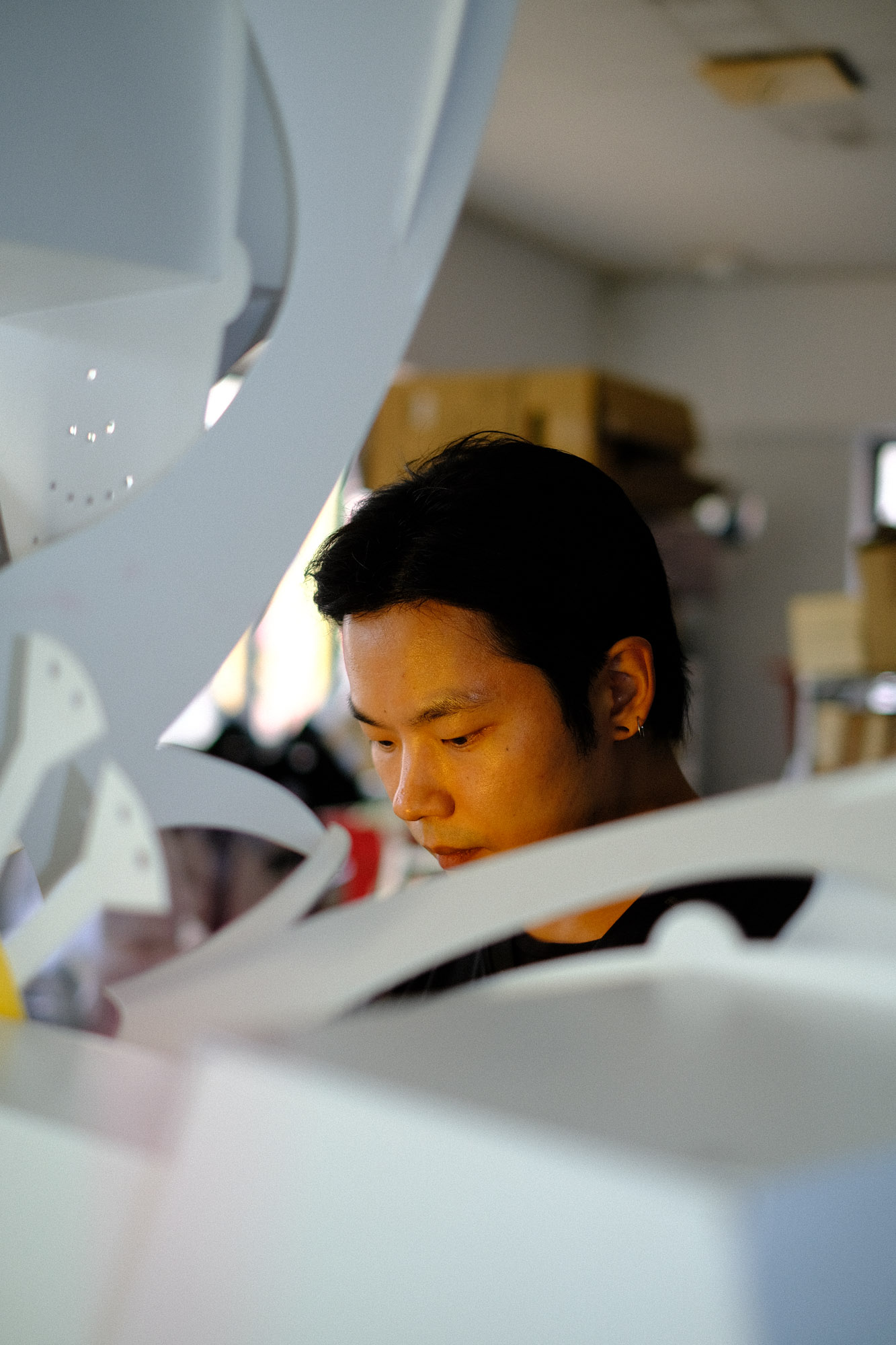

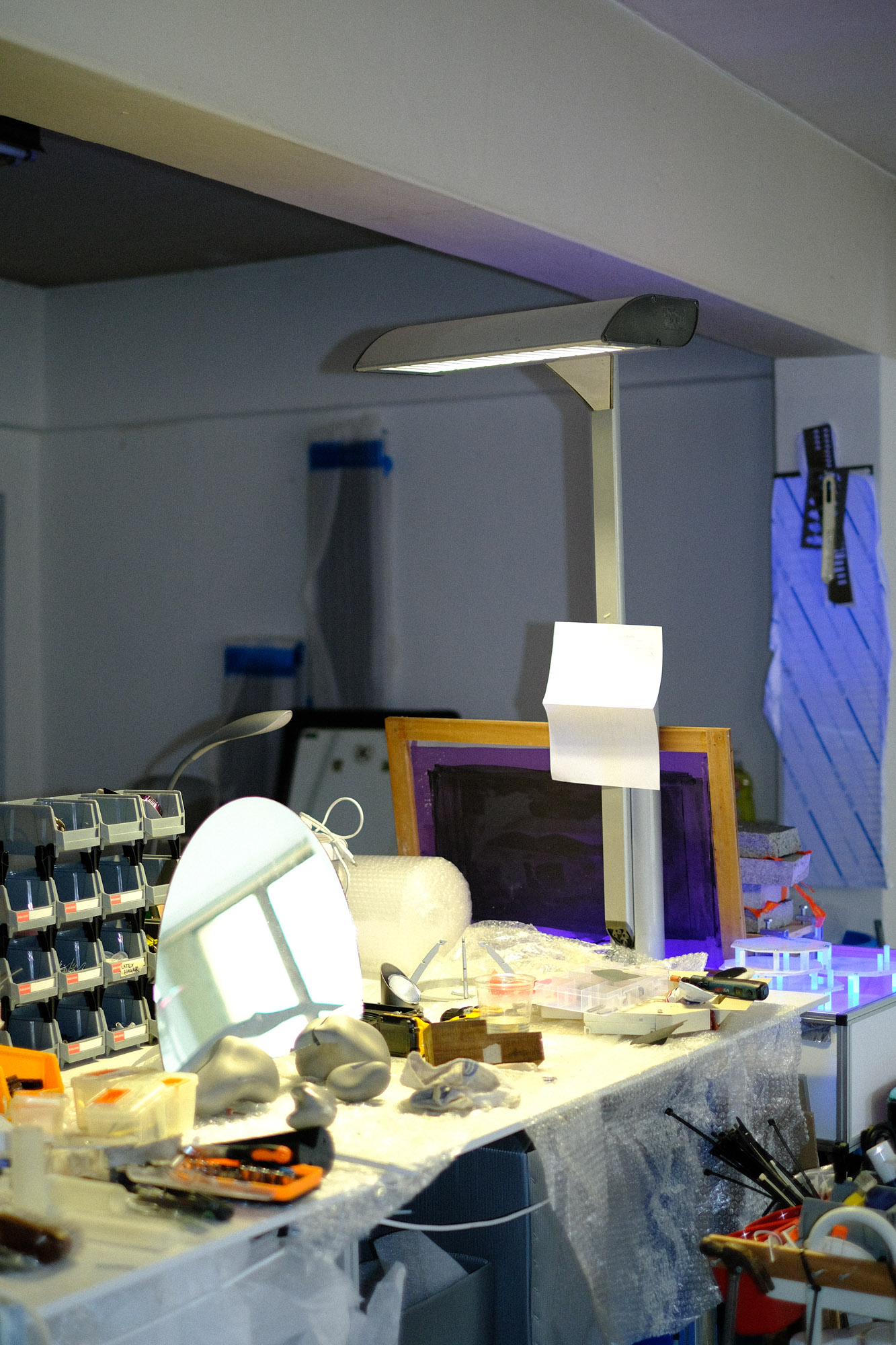
Your background is in printmaking—do you feel that influences your work with sound and sculpture now?
My approach to creating objects is very image-based, which I think comes from my printmaking roots. In printmaking, you’re always thinking in layers, compositions, and visuals. I carry that into designing a speaker or an installation—I often visualize it almost like a 2D image or a silhouette first, then build it out in 3D. I sometimes say I “paint” or “compose” with objects. Even when I’m designing a very functional structure, I’m thinking about the overall image it presents, how light and shadow will play on it, the rhythm of its components. That’s directly tied to how a printmaker or visual artist thinks. Also, printmaking gave me patience and attention to detail, which helps when tinkering with hardware and assembly of complex pieces.
I’m also curious about the forms you create. The pieces have these organic, flowing shapes, almost like something biological or like machinery out of an anime. Are they inspired by natural forms or the human body? Where do these shapes come from?
It’s a mix of influences, both nature and the body, but also mechanical parts. I’m fascinated by how objects can balance energy and function. For instance, a lot of the structural forms I make have to do with distributing weight or absorbing vibration (because of the speakers), so they end up looking a bit like bones or sinews. I like to say the forms should feel alive even though they’re inanimate. Sometimes I’ll get inspired by very mundane things: once I was looking at a portable gas stove used for camping, noticing how its legs unfolded to support it, and it gave me an idea for a support structure. I also look at plant structures, like how stems hold up a flower, or how a branching pattern might distribute loads. All that filters into the aesthetics. In the end, the form usually comes from asking a functional question: “How will this stand upright and hold this weight?” and then answering it in a playful, non-conventional way. The result can look nature-inspired, because nature solves a lot of structural problems elegantly. So yes, it’s both inspired by natural forms and driven by the practical needs of the object.
Do you see your speaker sculptures more as art or as functional objects?
Honestly, it’s both. And that’s intentional. The speaker works – it fills the space with sound, it’s engineered to do a job – so in that sense it’s design and it has a function. But if you looked at it and didn’t know what it was, you might just think it’s a contemporary sculpture. I’m comfortable with it living in both worlds. I don’t feel a need to label it one or the other. In a way, the whole project of these audio installations is about erasing that boundary. It’s a functional design object and an artwork at the same time. I think many creatives in Seoul operate with that mindset.
It transforms a space like a piece of art, while performing a clear function like design.
I’ve always been interested in how a relatively small object or intervention can completely shift the atmosphere of a space. You put a wild-looking speaker sculpture in a minimalist store, and suddenly the store feels different—people experience it differently. They might come in just to see the installation and hear it, even if they don’t intend to buy anything. It adds character and a kind of soul to the space. For me, that’s the goal: to change the game a little bit, to make people pause and experience something in the middle of an everyday commercial environment. If I’ve done that—if I’ve mixed art and function in a way that intrigues people—then I’m happy.

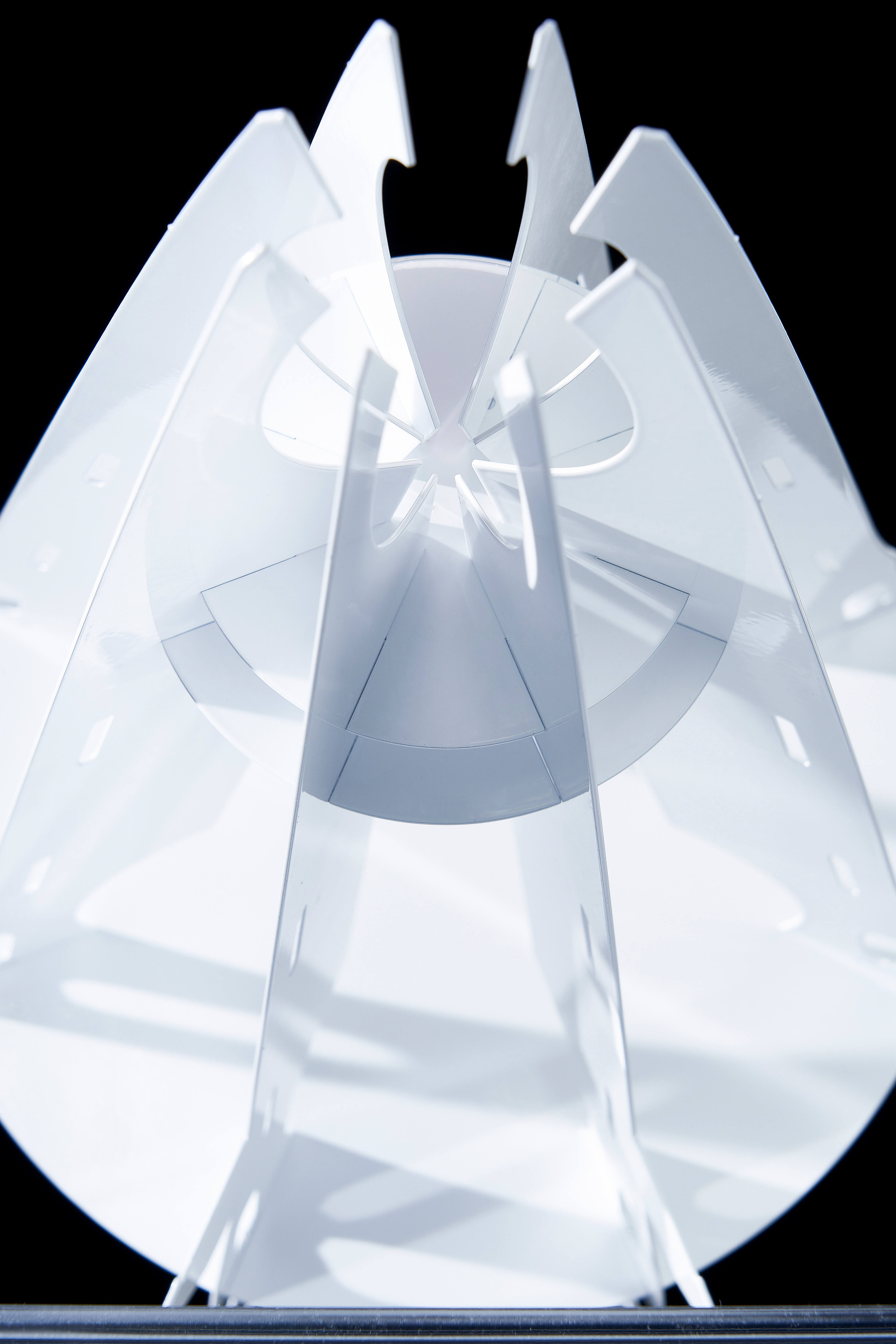

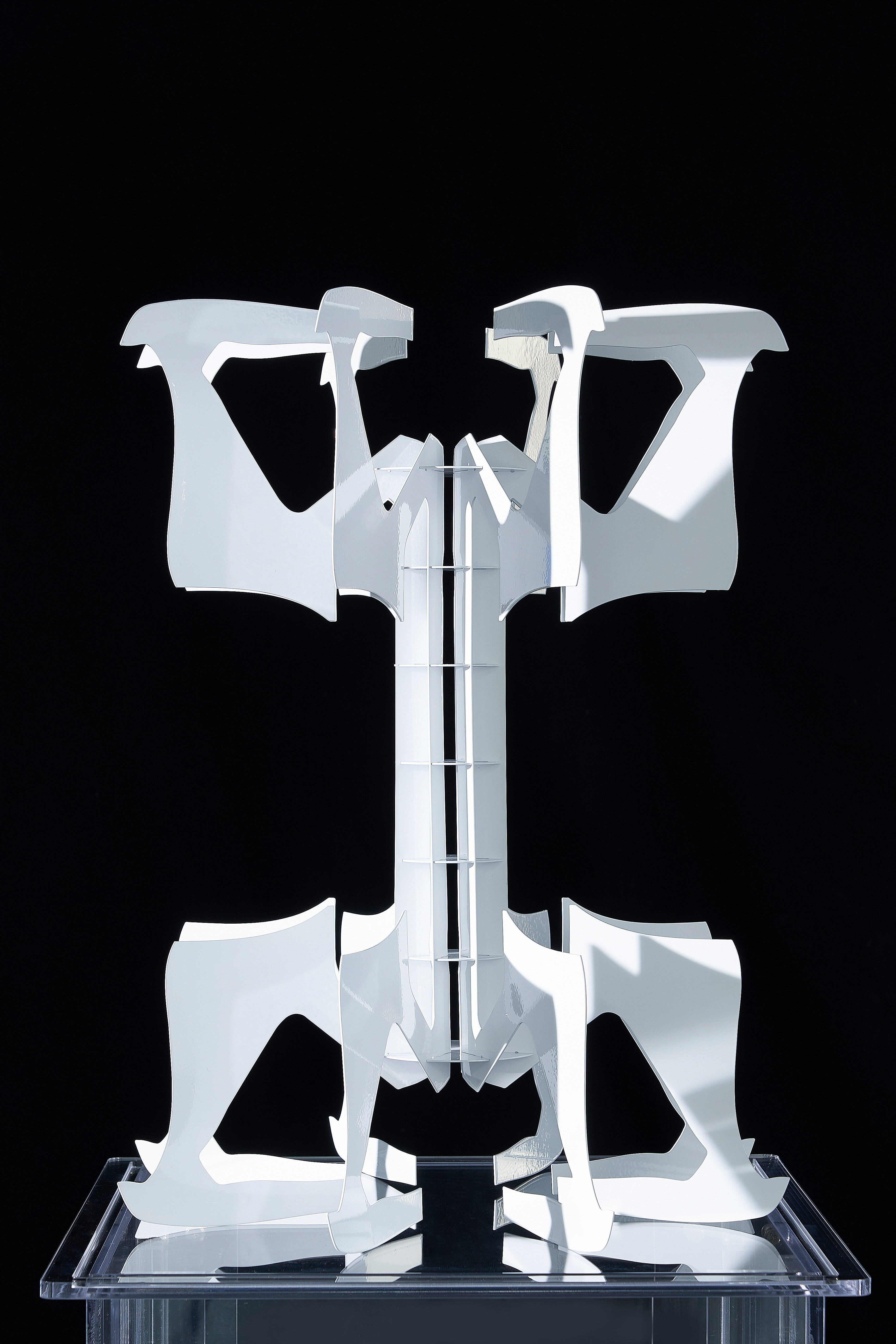
Photography and interview by Sebastian Vargas / Additional images by Erika Cox and Evening Audio
